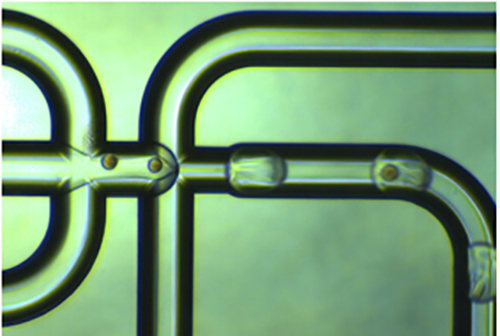
A new tool has been developed that reveals both the function of cells and where they are situated within tissues with high enough accuracy that it could even replace microscopy. A Bayesian model, cell2location, was created by researchers at the Wellcome Sanger Institute, the German Cancer Research Center, and their collaborators. It combines single-cell sequencing and spatial transcriptomic data to visualize the relationships between cells and better understand tissue biology.
The paper describing this work was published today in Nature Biotechnology. It demonstrates cell2location’s capacity to pinpoint the location of detailed immune cell types in the human gut and lymph node, as well as map the fine-grained structure of the mouse brain.
The model is already being used as part of the Human Cell Atlas initiative to map every cell type in the human body, and the researchers say it has the potential to one day replace microscope analysis as a technique for pathologists to understand what is happening in a biopsy.
Unknown cell types are being discovered regularly by research initiatives, such as the Human Cell Atlas, using single cell sequencing. But researchers also want to understand how tissue functions at a molecular level.
Cell2location integrates single-cell RNA sequencing and spatial transcriptomic data from tools including Visium, HDST, and Slide sequencing (Slide-seq). The researchers write that “Cell2location accounts for technical sources of variation and borrows statistical strength across locations, thereby enabling the integration of single-cell and spatial transcriptomics with higher sensitivity and resolution than existing tools.”
In this study, researchers applied cell2location to several types of human and mouse tissue to provide three-dimensional data about which cell types were present and where they were situated.
In the mouse brain, which is structured into distinct regions, such as the cortex and thalamus, cell2location was used to provide a more detailed analysis of astrocytes. It was able to detect subtle differences in the genes the cells expressed, down to as few as 10 different genes, identifying rare astrocyte subtypes never previously described. Cell2location was also able to map these rare subtypes, including one that accounted for just 41 cells out of 40,000, to a specific location within the tissue.
“The fact that cell2location was able to identify and spatially map previously undescribed astrocyte subtypes in the mouse brain demonstrates the remarkable sensitivity of our approach. Combined with a precise location for these rare subtypes, researchers now have access to a wealth of information with which to begin unravelling the role these cells play in the overall functioning of the brain,” said Oliver Stegle, a senior author of the paper who is affiliated with the Wellcome Sanger Institute, the German Cancer Research Center (DKFZ), and the European Molecular Biology Lab (EMBL).
The data provided by cell2location also opens up new applications for single cell sequencing in the realm of pathology, where microscopes are currently used. In future, a single cell approach could provide much more detailed information about what is happening at a molecular level.
Omer Bayraktar, also a senior author of the paper, and from the Wellcome Sanger Institute, said: “I’m very excited about the potential for cell2location to change the way we observe life at a molecular level. I always thought that mapping tissues would remain in the realm of histology, which is limited in what it can reveal. Now we have a tool that’s better than a microscope and can provide us with more detail than we could have ever imagined.”











